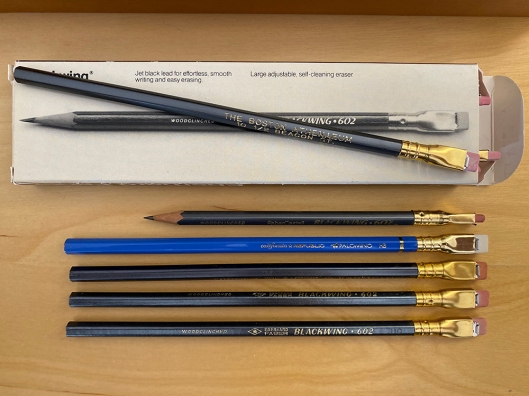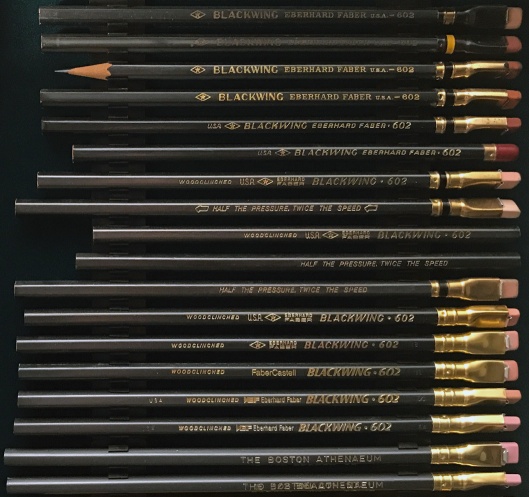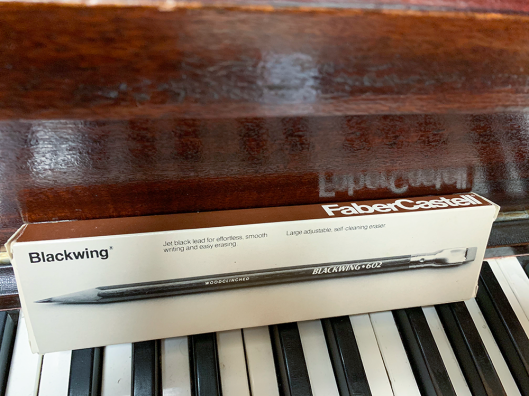
Dear Readers,
If this is your first visit here, please be sure to visit this page. It is a summary of the contents of this blog; an essay called “No Ordinary Pencil.”
Not long after I started this blog, California Cedar’s first Palomino Blackwing* began making its way into the world, and I was excited like a lot of people and very supportive: I gave them some early photos of mine for free, which were used for some international PR, and loaned them some items to be photographed for their website. However, that initial excitement dwindled into ambivalence after some early misrepresentations were uncovered, but the benefit of the doubt persisted. Though not long after, that ambivalence eventually turned into disappointment—I, as well as others in the pencil community, noticed that the advertising campaign for the Palomino Blackwing was at times wildly inaccurate (if not purposely suggestive), and my site and its contents were in some ways becoming an involuntary partner to that enterprise. I finally began posting about these things along with other blogs in order to bring attention to what was going on. My intention was, and remains, to document as accurately as possible the interesting true story of the Blackwing, and to that end it was hard to understand the choices that CalCedar kept making.
For better or for worse it seems that this blog happens to be the only one of its kind vis-à-vis the history of the Blackwing 602 pencil. The blog itself is about two years old, but it represents about four years of work and countless hours spent researching, photographing, collecting, trading, and writing—all done just for doing’s sake; a labor of love. But because this blog has content unique to the Internet, it means that it gets the attention of those who would like to use that content. Most have done so rather innocently (personal blogs, sharing photos, etc.) which is fine by me, and some have been responsible enough to send queries or notifications, but others—including some for-profit companies—have been less honorable and have infringed upon my copyrighted work. But my complaint isn’t simply about scholarship and attribution, and it’s not at all about money. Rather it’s a combination of the appropriated work, plus how it has at times been folded into California Cedar’s questionable PR campaign, which in turn has distorted the Blackwing’s story, that has spoiled things (see this page for details). Everyone wants to be recognized for their work, but this is less about my wanting credit than it is about me wishing they would just do their own work and leave mine alone—just like how you’d want the person sitting next to you to stop copying from your test paper.
Knowing that a company—one with vast financial resources—was watching my every post (the CEO of the company has subscribed to this blog) slowly began draining my enthusiasm: it’s difficult to explain just what it’s like to work hard for each new and unique Blackwing-related “find” and to put the work into posting about it, only to realize it’s likely just to be taken or copied in some way (and sometimes even inaccurately to boot). And it puts me in a unique position: as a consumer, I share the opinion of those who think CalCedar’s marketing has been inaccurate and questionable at times, but I have no control over that. The best I can do for the Blackwing is to publish my own work and let people decide for themselves. But, when on top of everything else it’s my own work that is being copied—especially when it’s coming from a company that claims to be continuing the “legacy” of the Blackwing—that’s a bridge too far. My interest remains unabated, but I don’t want to continue this blog if it means being a source of reference for CalCedar’s designs—the Blackwing, and the work I’ve put into documenting it, mean too much to me.
I want to say how grateful I am to everyone who has visited here, supported this site, and contributed to the conversation. It’s remarkable how this immeasurably obscure thing—a pencil—could bring together so many kind and like-minded people from all over the world. I’ve enjoyed hearing from you and more importantly, learning from you.
I’m going to leave the site up and the comments open, and I will be cleaning-up and updating older posts as well as continue to edit and expand the “No Ordinary Pencil” essay, but I do not plan on posting any new Blackwing content. There’s always a chance there might be a new post, but if there is it will likely be about current events. I would have preferred to keep sharing my ongoing research about the Blackwing 602, to say the very least, but not everyone is playing fair—I hope you understand.
For anyone who thinks this is about pencils, it’s not—they’re just pencils. It’s about caring for something very deeply.
Thanks for all of your support, and I hope you’ve enjoyed reading.
All the Best,
Sean

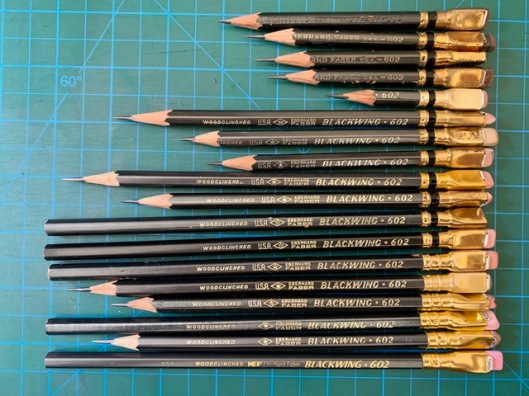
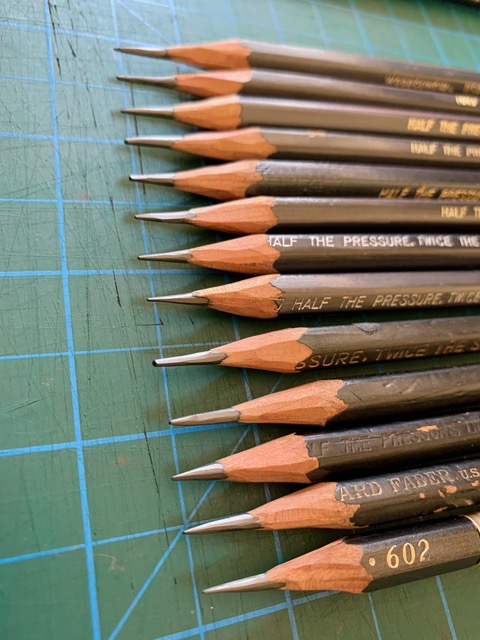
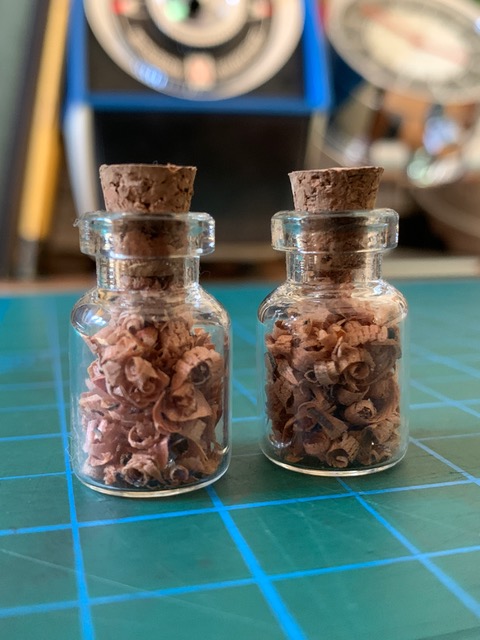
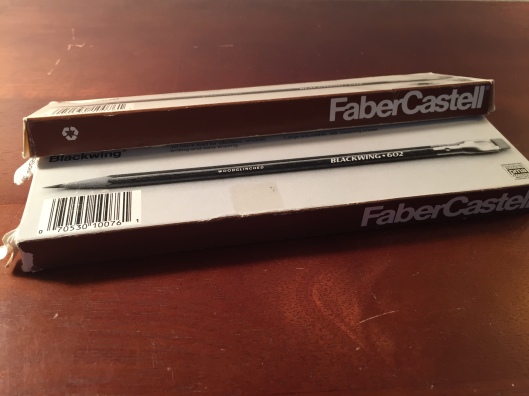
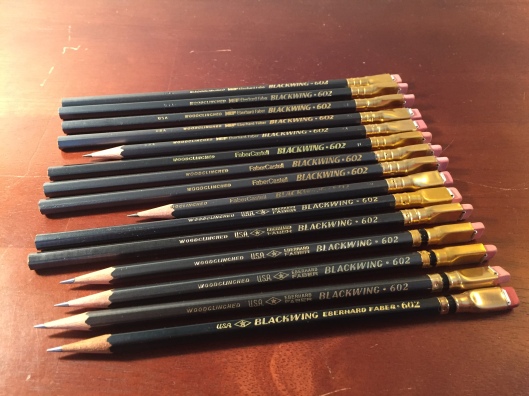
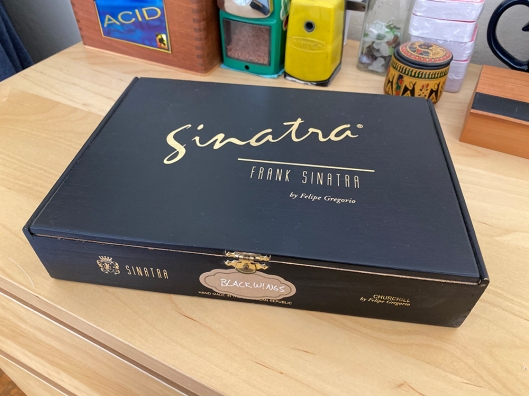 This collection belongs to Andy Welfle. Andy writes:
This collection belongs to Andy Welfle. Andy writes: